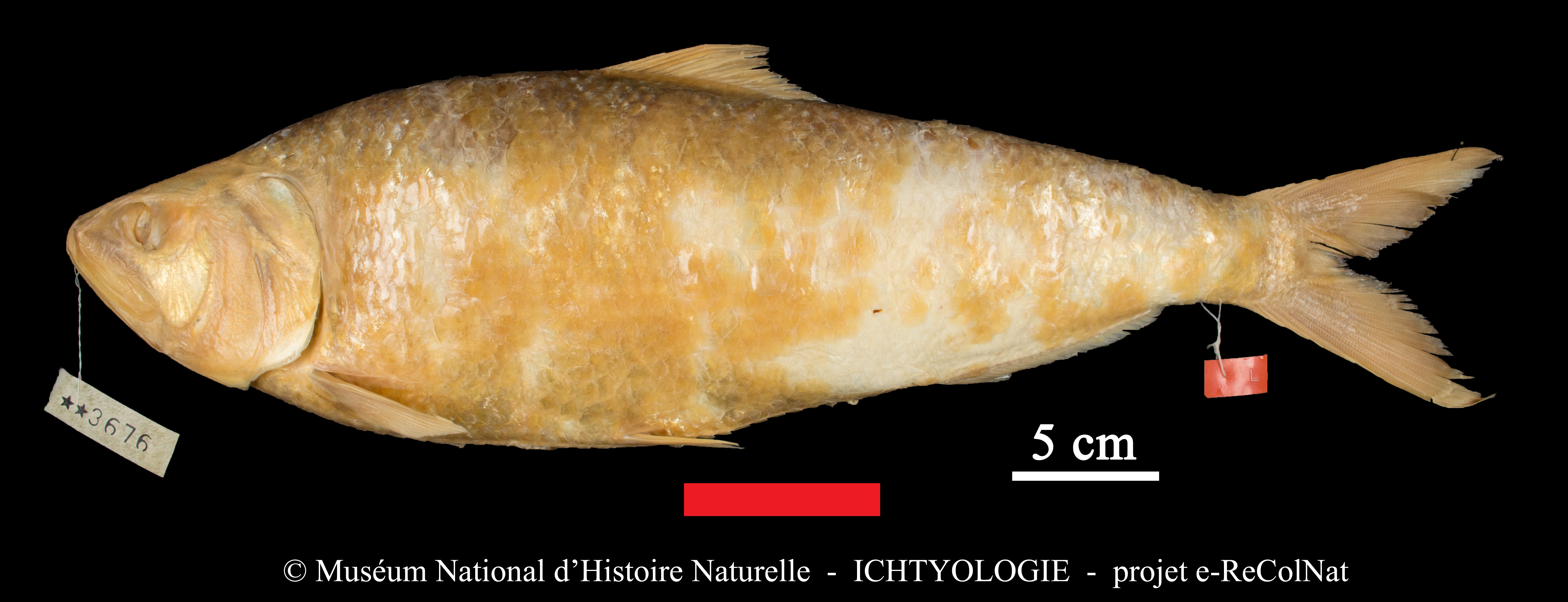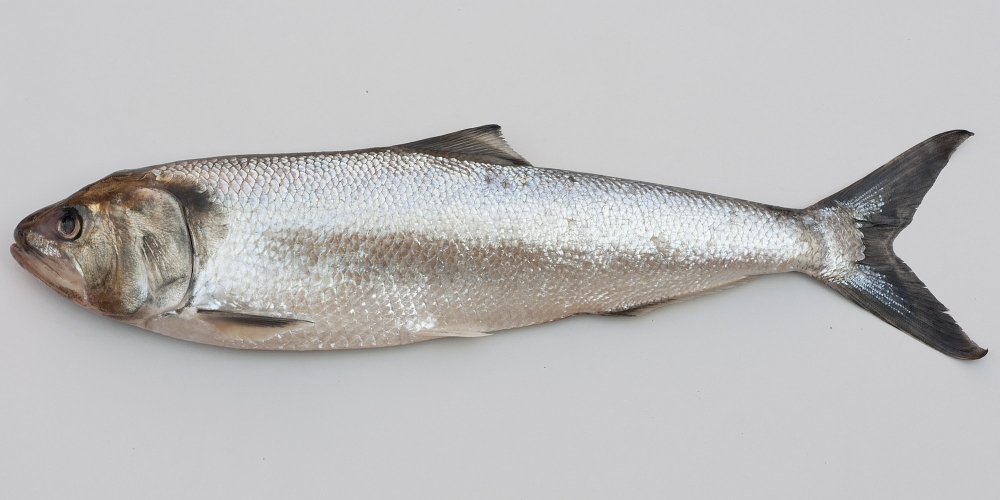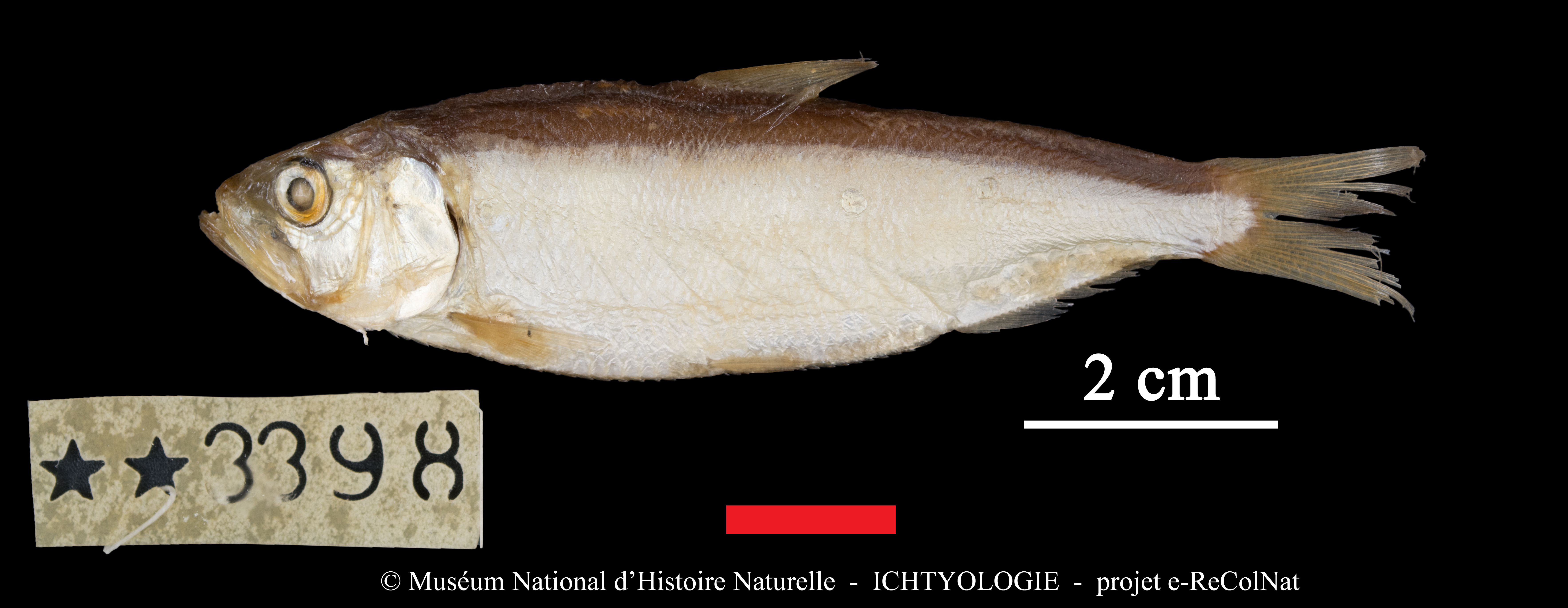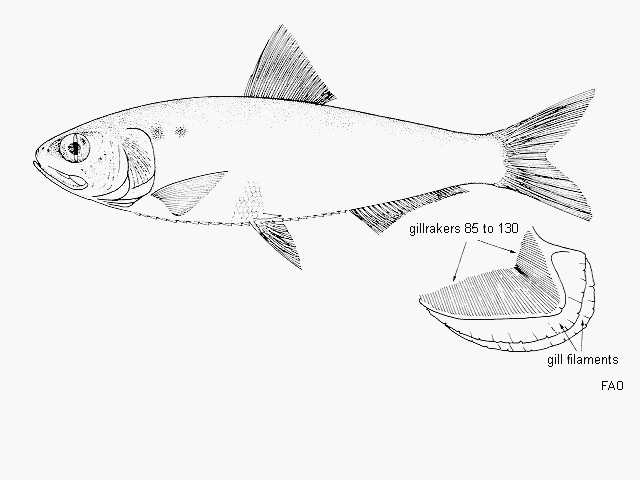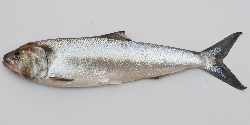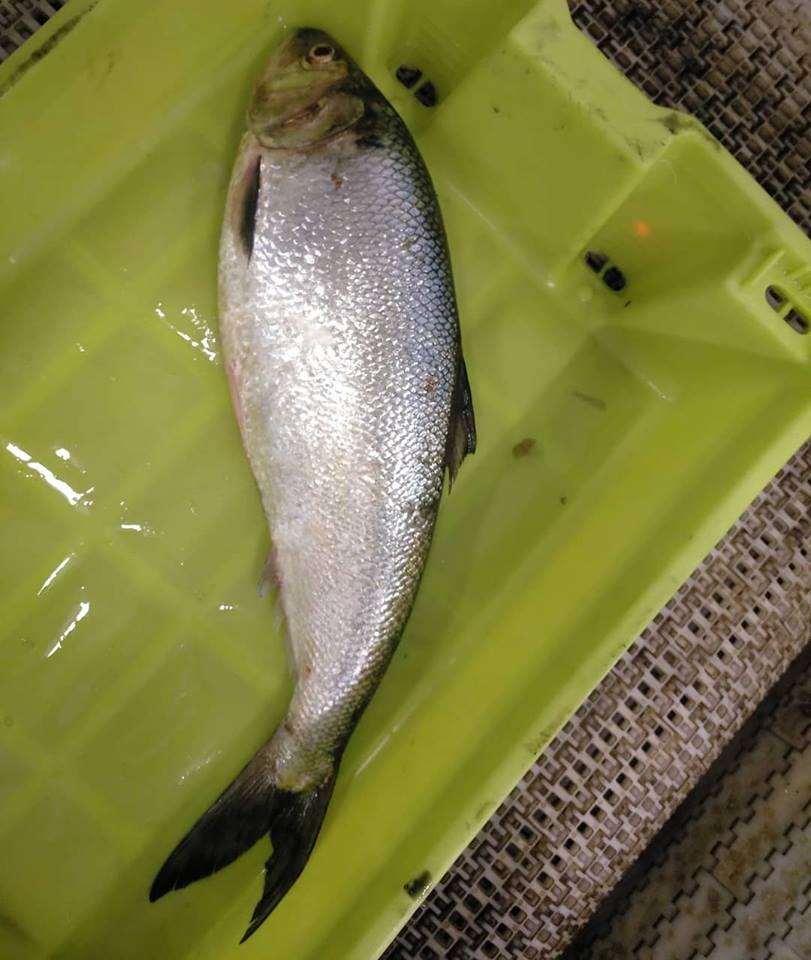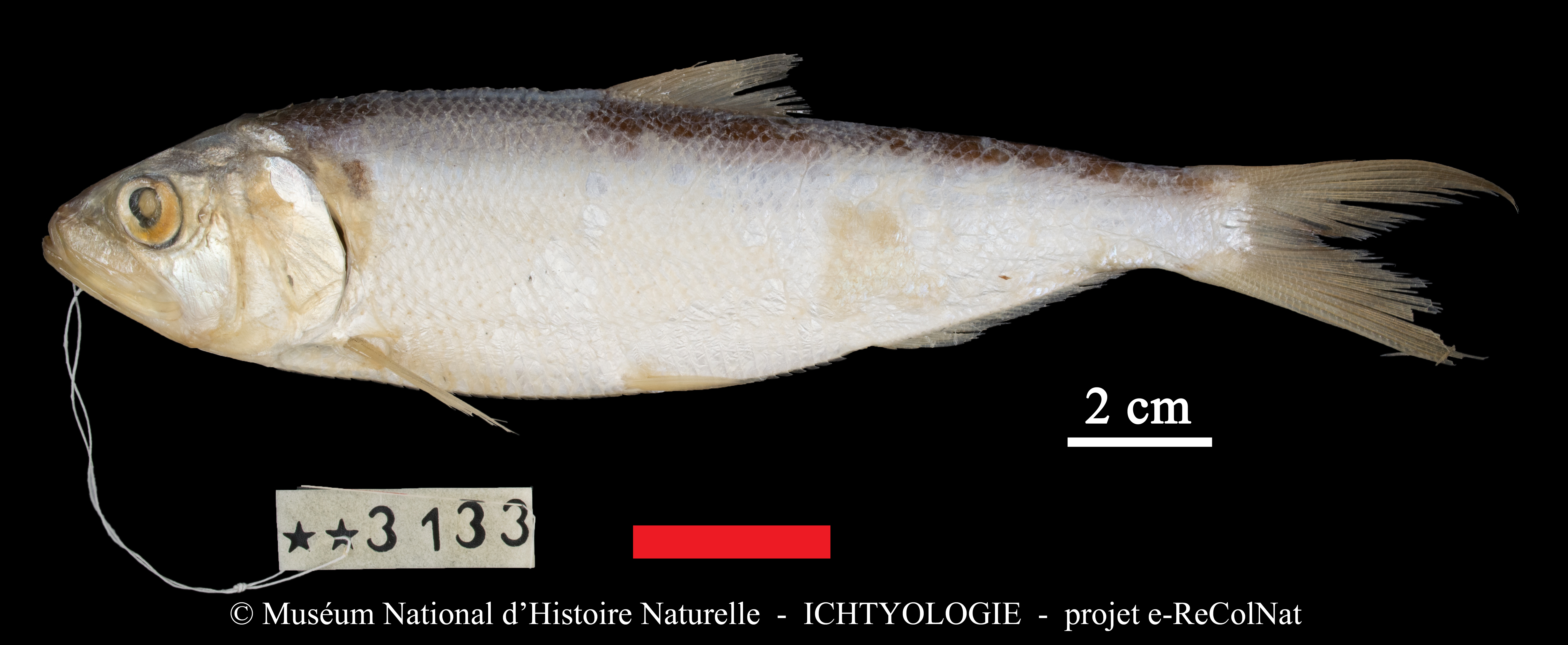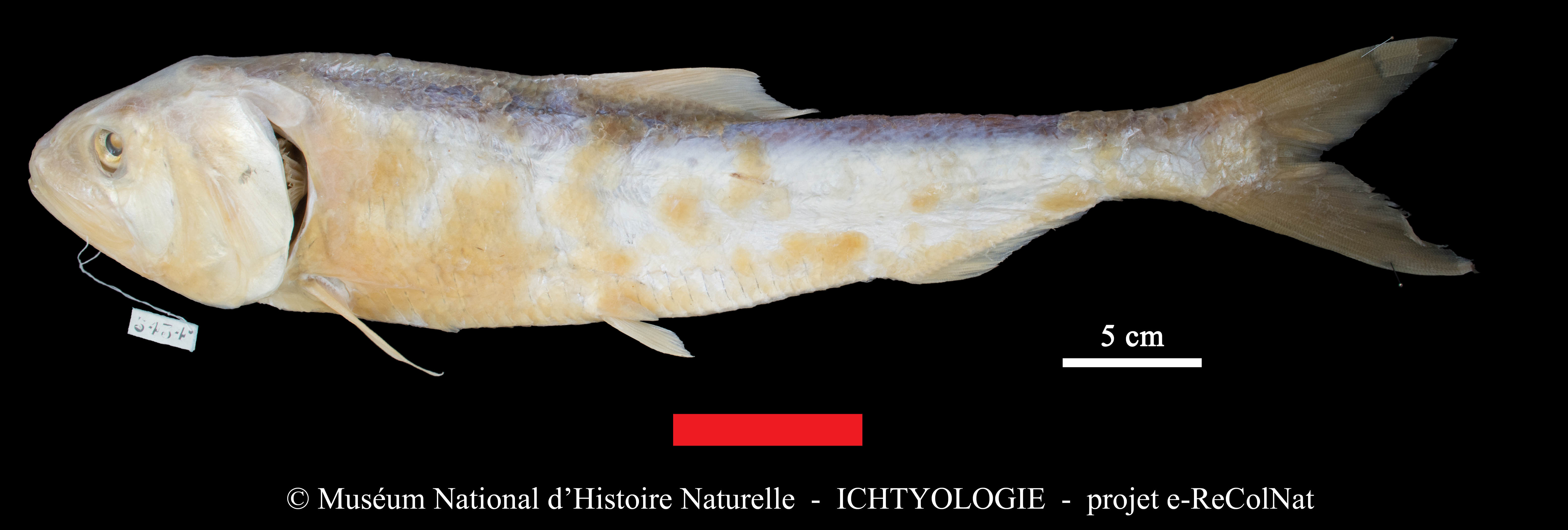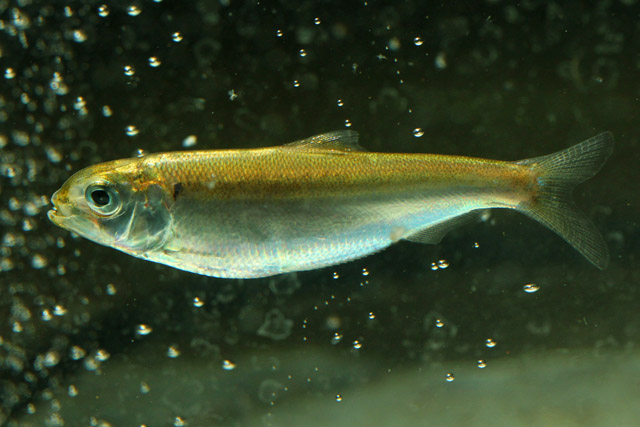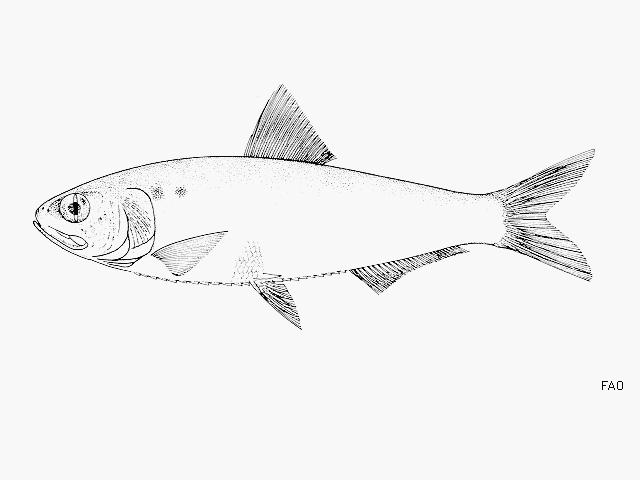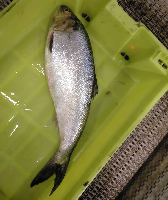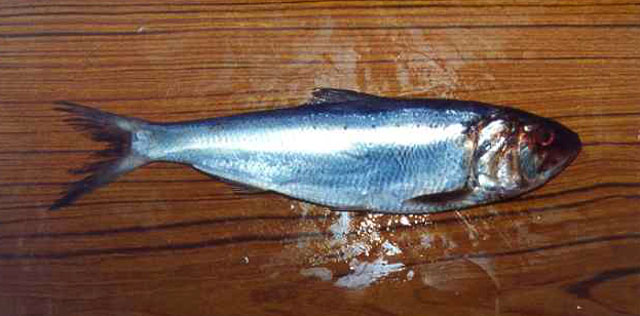Alosa alosa (Linnaeus, 1758)
Description
Dorsal spines (total): 0; Dorsal soft rays (total): 18 - 21; Anal spines: 0; Anal soft rays: 20 - 27; Vertebrae: 57 - 58. Diagnosis: Body somewhat compressed, fairly deep with depth at pectoral fin more than head length, scutes apparent along belly (Ref. 188, 51442). Upper jaw with a distinct median notch, lower jaw fitting into it; no teeth on palatine and vomer; gillrakers long, thin and numerous, a total of 85 to 155 on first arch, longer than gill filaments (Ref. 188, 6683, 59043). A dark spot posterior to gill opening, but sometimes absent, sometimes followed by several small blotches (Ref. 188, 59043). Alosa alosa resembles Alosa fallax, which has fewer and shorter gillrakers and 7 or 8 black spots along flank (Ref. 188).
Common Names
Taxonomic Hierarchy
Kingdom: Animalia
Phylum: Chordata
Class: Teleostei
Order: Clupeiformes
Family: Alosidae
Genus: Alosa
Species: Alosa alosa (Linnaeus, 1758)
Climate Zone
Location
Biology
Amphihaline species, schooling and strongly migratory, penetrating far up rivers but not into small tributaries (Refs. 188, 59043). Adults are usually found in open waters along the coast (Ref. 51442). In freshwater, inhabits major rivers but may also enter tributaries, if water temperature is equal to or is warmer than the main river (Ref. 188, 10536). Known lake populations from Morocco and Portugal need access to rivers to spawn (Refs. 10536, 89647, 89648). Larvae and small juveniles inhabit deep slow-flowing areas of rivers (Ref. 89649), some swimming upstream in late summer and autumn (Ref. 10536). Juveniles (up to 1+ years) are usually found near estuaries or river mouths (Refs. 10536, 59043), possibly making vertical diurnal movements synchronized with the tides; they remain in estuaries for over one year (Ref. 89630). Feeds on a wide range of planktonic crustaceans; larger adults feed on small schooling fishes (Ref. 188, 51442, 59043). Juveniles in freshwater prey on insect larvae. Females in European rivers commonly reach 70 cm total length (Ref. 10536). Females grow faster and are always larger than males of the same age (Ref. 10536). Less common than Alosa fallax but both have suffered from pollution and weirs or other obstructions (Ref. 188). It has been suggested that members of the genus Alosa are hearing specialists with the American shad (Alosa sapidissima) having been found to detect and respond to sounds up to at least 180 kHz (Ref. 89631). This may aid in predator avoidance (e.g. cetaceans) (Ref. 89632). Hybridization with the twaite shad (Alosa fallax) has been reported from the Rhine (Ref. 89633) as well as from rivers in France and Algeria (Ref. 10536). Shad hybrids may reproduce (Ref. 27567). Marketed fresh and frozen; eaten sautéed, broiled, fried and baked (Ref. 9988).
Habitat
freshwater
